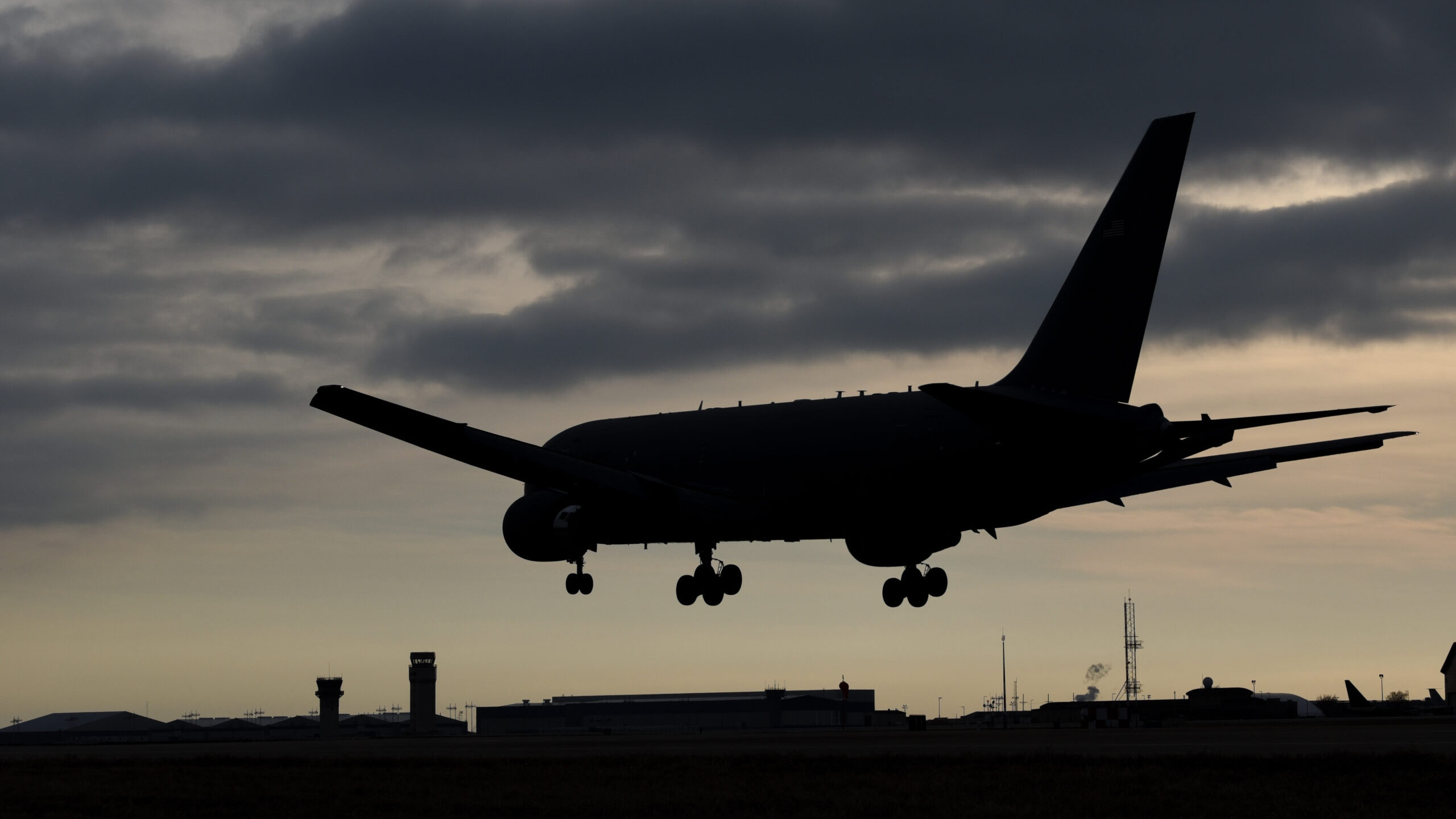
A KC-46A Pegasus arrives at McConnell Air Force Base, Kan., Jan. 31, 2019. ((Alexi Myrick/US Air Force)
WASHINGTON: For the Pentagon to be able to match up with China in any military operation, it needs to make substantial, near-term investments in aerial refueling capabilities, a new report warns.
The report, “Resilient Aerial Refueling: Safeguarding the US Military’s Global Reach,” written by Tim Walton and Bryan Clark of the Hudson Institute, argues that enhancing the Pentagon’s aerial refueling capabilities should be a “top priority” for the Defense Department and should receive an additional $6.3 billion throughout the next decade.
“Funding for these investments could be drawn from additional resources, other elements of the US Air Force budget, or if necessary, by reducing the procurement rate of KC-46A or Bridge Tankers. Even if it comes at the expense of aircraft, improved surface architecture has the net effect of improving the tanker fleet’s effective offload capacity,” according to the report, shared with Breaking Defense ahead of publication.
“Given surface architecture deficiencies, additional aircraft investments without improving the surface architecture will yield little marginal benefits apart from creating a larger attrition reserve,” the authors write.
The Air Force’s tanker recapitalization efforts began in 2005 and include a three-part program. The first element of the program is Boeing’s KC-46A, which is currently being delivered to the Air Force, albeit not without controversy and delays.

The chart summarizes how the report’s authors believe the Pentagon should spend an additional $6.3 billion over the next decade to shore up the Air Force’s tanking capabilities. (Provided by the Hudson Institute)
The bridge tanker refers to the Air Force’s second stage program. It will likely include a competition between an updated Boeing KC-46A or Lockheed Martin’s Next Generation Tanker, which is based on an Airbus A330 aircraft. The Air Force has not yet specified how many bridge tankers it plans to buy but requests for information or proposals are anticipated in 2023. That plane will likely not join the fleet until the 2030s.
The third stage, a future aircraft that will follow the bridge tanker, is what the Air Force calls KC-Z. The Hudson report rebrands this stage as “K-Z(M)” because the analysts contend this future aircraft should not carry cargo (represented by the “C”) and should be medium-sized (represented by the “M”).
The report offers three potential acquisition plans: the first plan truncates the bridge tanker program and retains a squadron of KC-135s in the force for an extra decade.
With this plan, “the US Air Force can fund investments into the surface architecture and other areas such as C3 and tanker defenses. The lower KC-46A procurement rate in the 2020s also frees up funds to accelerate the [third stage] program,” according to the report.
The second and third plan each make varying buys of either Boeing’s KC-46A or Lockheed’s bridge tanker offerings, respectively.
“None of the plans prevent a 2020s drop in nominal offload capacity as KC-10s are retired, since bridge tankers and K-Z(M)s would not reach the force in mass until the early 2030s and late 2030s, respectively,” the report states. “However, if all three plans made the proposed investments in posture and bulk fuel distribution, employable tanker capacity in the Indo-Pacific could increase by 63% within a decade and approximately double by 2041.”
Air Force picks Anduril, General Atomics for next round of CCA work
The two vendors emerged successful from an original pool of five and are expected to carry their drone designs through a prototyping phase that will build and test aircraft.


























